During the 1961 Berlin Crisis — one of the various moments in the cold war in which we came frighteningly close to engaging in actual war with the Soviets — President John F. Kennedy vowed to identify spaces in “existing structures both public and private that could be used for fallout shelters in case of attack.”
After JFK’s speech, a fallout shelter economy sprung up overnight in the U.S. There were door to door bomb-shelter salesmen, shelter displays at malls and county fairs, and pamphlets for sale on every magazine rack.
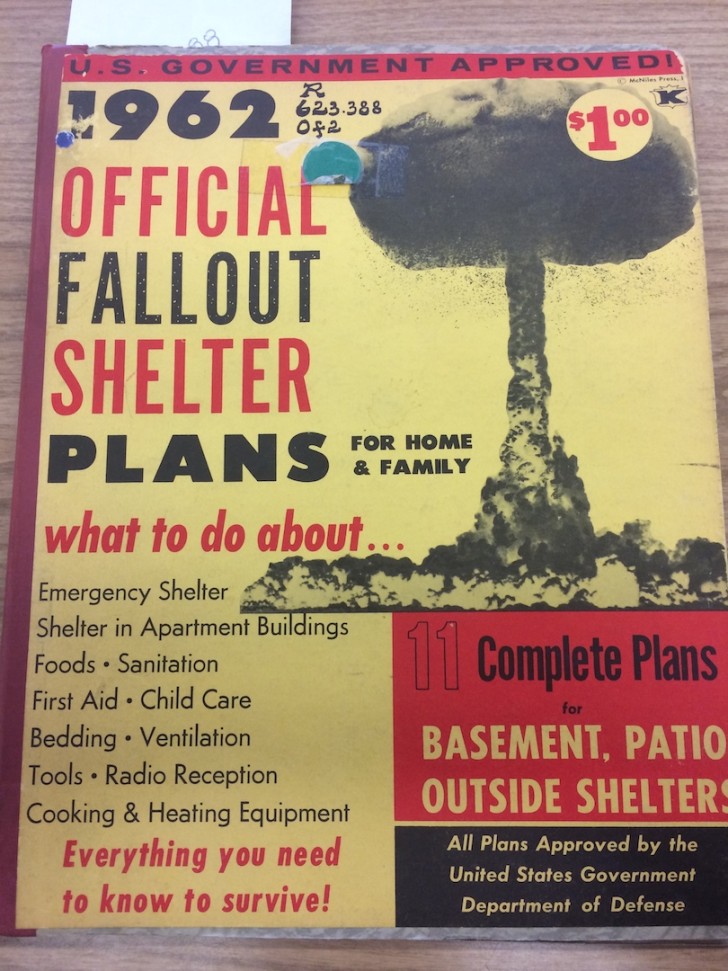
But by the time Kennedy made that speech, one small town in Southern New Mexico had already broken ground on a unique shelter that would double as an elementary school.

Artesia, New Mexico is located about 40 miles south of Roswell. It was near the now-closed Walker Air Force Base and White Sands Missile Range and had its own oil refinery — all of which made Artesians feel particularly vulnerable to attack should there be a war with the Soviets.
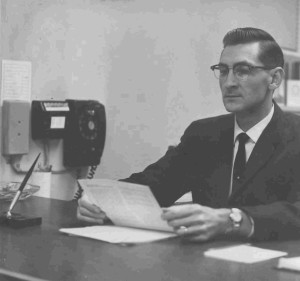
Abo Elementary School was part of a pilot program; The Office of Civil Defense wanted to see if schools could make good public shelters, and they paid a portion of the total cost of the school. Abo Elementary got a fair amount of media attention at the time of its opening — around 60,000 people toured the school in its first few years and Dan Rather did segment on Abo on the CBS evening news.
Abo Elementary is entirely underground, and its roof served as a playground for the kids. There were three separate stairways where kids entered the building, each equipped with a 1,800-pound steel blast-door and decontamination showers.
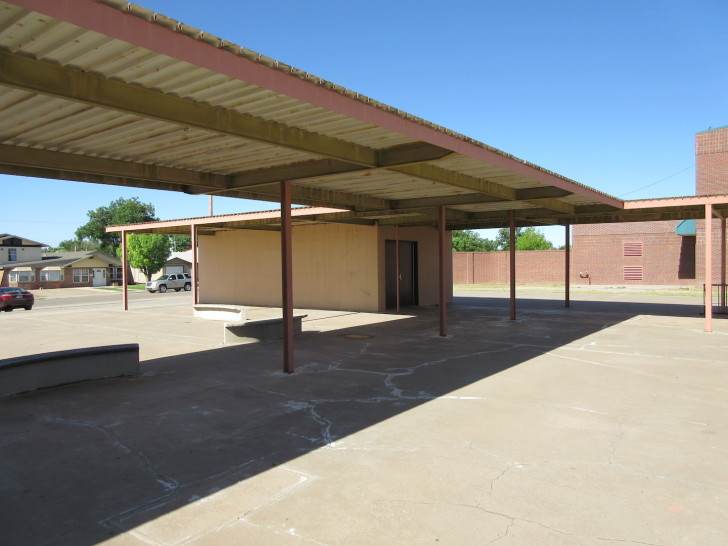

Abo Elementary was designed by architect and civil defense enthusiast, Frank Standhart. He claimed it could withstand a 20 megaton blast and resist radiation. The school included a morgue and stockpiles of medicine, food and bedding for would-be inhabitants. It also had a generator, a well for drinking water, and a ventilation system.
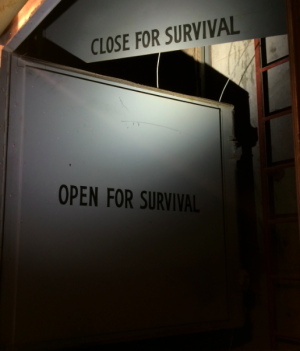
The nuclear-fallout protections were invisible to the kids that went to school there. Many of them didn’t even know that their school was built to double as a bomb shelter.
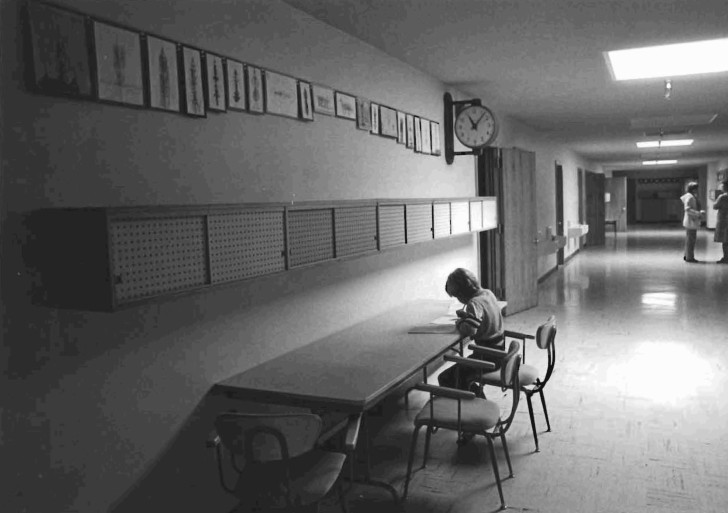


Appropriately (and adorably) the kids at Abo decided their mascot would be a gopher.
Teachers said they generally liked the school because the students weren’t distracted by staring out the windows, and the students were proud of their school. But Abo had critics, too, including one Soviet newspaper that said Artesia was “indoctrinating students to the inevitability of war.”
Meanwhile, the rest of the country was similarly engaged in a debate over fallout shelters. Thinking about fallout shelters brought up all kinds of questions like what kind of world would you emerge to after nuclear war? And could a shelter system make our leaders more likely to engage in nuclear war? Time magazine published an article in 1961 called “Gun Thy Neighbor,” in which a man with a shelter in his backyard stated that he would kill any neighbors who tried to enter his shelter after a nuclear attack.
Even Bob Dylan weighed in on the fallout shelter debate:
Bob Dylan – Let me die in my footsteps by perostoppogno
Kenneth D. Rose, Author of One Nation Underground: The Fallout Shelter in American Culture, estimates that about 200,000 underground shelters were built from the beginning of the cold war to about 1965. That’s about one for every 900 people, but in an era when the majority of Americans believed nuclear war was imminent, Rose thinks 200,000 is a small number.
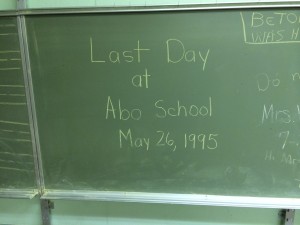
Abo Elementary never had to serve as a fallout shelter, but it served as a school until 1995. And when they finally closed the school, it wasn’t because they were tired of being underground, it had more to do with the cost of maintaining an underground building.
A new school called Yeso Elementary was built above ground, and just to the west of Abo, but in the spirit of Abo, has very few windows. Yeso and Abo are both geological layers of the earth; Yeso being the layer just above Abo. Abo Elementary was listed in the National Registry of Historic Places in 1999.
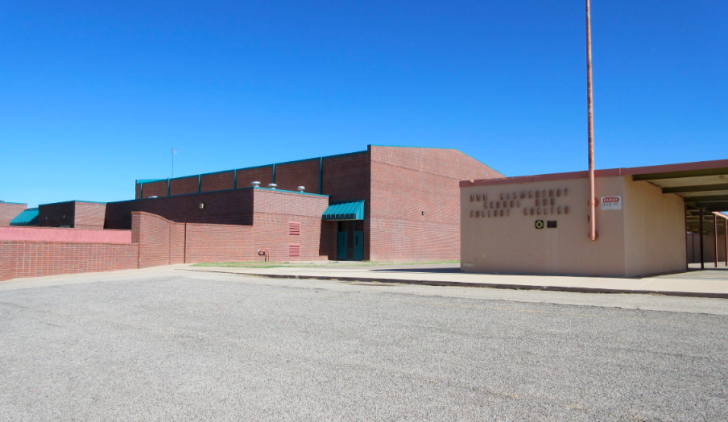
Now Abo Elementary is used for district storage. But twice a month it’s also used by Federal Law Enforcement Officers to train for school-shooting scenarios. The school that was once meant to protect children from the dangers of the modern world is still doing so.

99% Invisible Producer Katie Mingle spoke with Kenneth D. Rose, author of One Nation Underground: The Fallout Shelter in American Culture; Thad Phipps, Assistant Superintendent of Artesia Public Schools; Scott Simer, Director of Maintenance of Artesia Public Schools and Jana Williams, former Abo student.
Special Thanks to Nancy Dunn at the Artesia Historical Museum, and to KSVP for having Katie live on air.

Our Squarespace site of the week is from Josh Ellingson. He made this!




Comments (23)
Share
Download link takes you to Soundcloud and does not download automatically. No option on Soundcloud to download
Who needs a shelter? Just duck and cover. What could possibly go wrong?
There are a bunch of tracks from Boards of Canada’s album Tomorrow’s Harvest in this episode. For the curious, they are:
~ 0:00 Come to Dust
~ 1:47 White Cyclosa
~ 8:00 New Seeds
~ 19:16 Sick Times
Thanks Adam. I was coming here to see what the music was, because it was particularly excellent in this episode. An especially great episode overall—I loved the clips and excerpts used.
How about the music at 22:15?
It’s nice to teach a person how to fish. In the podcast, the music is stereo, but for the most part everything else is mono, so computer programs can use this to isolate the music and you can use Shazam or the like to identify it.
1. Download the episode as an mp3
2. Download and install audacity (it’s free and open-source) http://audacity.sourceforge.net/download/
3. import the mp3 into audacity
4. Edit > Select > All
5. Effect > Plugins … > Vocal Remover …
What’s left are the sections of music.
REM is at 22:15
There were some great Twilight Zone episodes from these years on the theme of America’s obsession with fallout shelters.
What a great episode + write-up! I’ll link to it on my Adventures of Atomic Tourism blog next week (since all the readers are busy with The Fourth of July this weekend). Thanks for the awesome story!
As always an excellent story.
Makes me think of the years I lived in San Luis Obispo and there were buildings on the college campus with signs designating them nuclear melt down shelters because there was a nearby nuclear power plant which strangely was built on a fault line. Seeing the signs were a mixture of unsettling and reassuring.
I mentioned this awesome story over at my blog. :) http://adventuresinatomictourism.com/2014/07/05/underground-school-say-what/
Great episode. It reminds me of the few years I spent living in Geneva. Switzerland has enough fallout shelters for the whole population. Most apartment blocks (including the one I lived in) have a fallout shelter in the basement. In reality this gets used as a storage locker, but it has the heavy doors and ventilation system to protect the people living in the building. People whose homes don’t have a shelter have space allocated in nearby municipal ones.
If this seems weird to people unfamiliar with Switzerland you need to remember that their whole military policy is built around defence. They have a tiny standing army, but have mandatory military service. This lasts for a little less than a year, but following the active year all the men are in the militia, and should be ready to be called up to defend Switzerland if needed. At the end of their year’s training they are sent home with their rifle so that, if a war happens, they can fight their way to the local base if needed.
Coming from the UK (where we have no conscription and a relatively large armed force) this seemed quite strange to me. But in time I came to realise that this is a great approach to defence. They are not set up to have a large involvement in expensive foreign wars that generally end badly. They also don’t spend a huge amount on defence. They do, however, have a much larger defensive force available in the case of a potential invasion.
Fuck yeah, Josh Ellingson.
Katie, this episode turned out so well! Yay, you! Nancy Dunn, Artesia (NM) Historical Museum
I went to first grade there
I went here from 1st through 5th grade. I loved this school!!! And me and my sisters names are on the chalk boards. My mom also worked there as a speech therapist from 1985 until it closed and she continued at Yeso. She was also the first 4th grade class to attend ABO when it opened!!! Great memories that will last a life time!!!
I went to school at Abo from 1st-5th grade (1987-1992). I absolutely loved it! I really wish that they would restore the school and allow people to go down and look around. My kids would love to see what it’s like!
I attended Abo from the year it opened until the sixth grade…………it is not underground, bermed would be more correct……..James F Riley
I attended Abo as well. Our 5th grade class was the last 5th grade to be there.
I can’t think of fallout shelters without remembering this poem from the Chad Mitchell Trio album called The Slightly Irreverent:
Hammacher Schlemmer is selling a shelter
worthy of Kubla Kahn’s Xanadu dome
Plushy and swanky with posh hanky-panky
that affluent yankees can really call home
Hammacher Schlemmer is selling a shelter
a push-button palace, florescent repose
electric devices for facing a crisis
with frozen fruit ices and cinema shows
Hammacher Schlemmer is selling a shelter
of chromium kitchens and rubber tile dorms
with waterproof portals to echo the chortles
of weatherproof mortals in hydrogen storms
What a great come-to-glory emporium
To enjoy a deluxe moratorium
Where nuclear heat can beguile the elite
In a crème de la crème crematorium
I really liked that school mr henderson was the principal when i went there my 5th grade year was the last 5th grade class to go there i remember voting on what they would call yeso i wish i could go back down there and check it out so i can show my kids where i went to school good times
I really liked this school mr.hickerson was the principal when i went there from the 2nd grade to 5th grade my class was the last 5th grade class to go through that school i remember voting on what they would call yeso i wish they would let people take tours of it cuz i would really like to show my kids where i went to school lots of good memorys at that school
I went to Abo with the last first grade class I’m ‘95. I also grew up with a bombshelter in my backyard in Artesia. It wasn’t until I was much older than I realized this was a strange thing to have. Artesia also has a second school that is half underground, Park Junior High School. I believe it is still in use today. Thank you for making this episode! (I’ve listened to 99PI for a few years now, and I was extremely happy to discover this episode from 2014.)